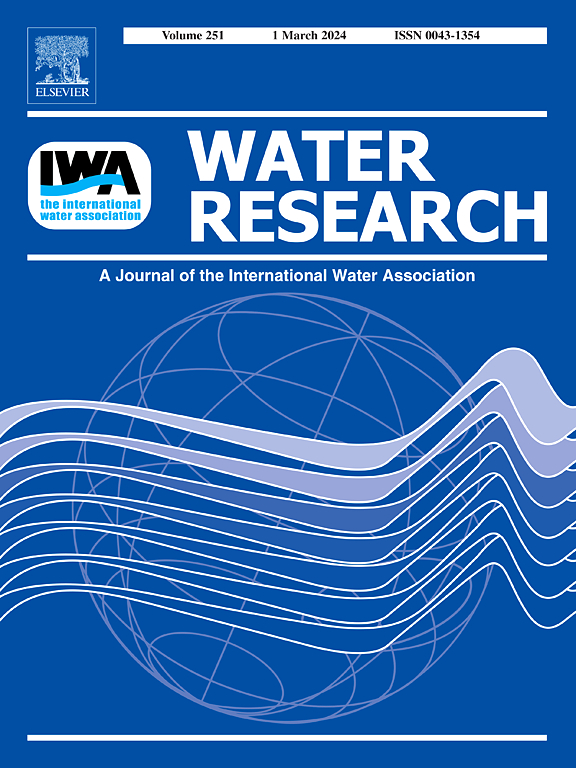Vertical heterogeneity and flexible root dynamics in pollutant transport: A hybrid lattice Boltzmann method - random displacement model approach for optimizing artificial floating bed design
IF 11.4
1区 环境科学与生态学
Q1 ENGINEERING, ENVIRONMENTAL
引用次数: 0
Abstract
Artificial floating beds are widely recognized as an effective ecological approach for river water quality management. However, prior research has predominantly focused on pollutant retention efficiency across vegetation types, leaving the pollutant diffusion dynamics influenced by flexible-rooted vegetation underexplored. This study bridges this gap by investigating solute transport mechanisms in artificial floating bed channels with flexible vegetation roots through integrated indoor flume experiments and numerical simulations. A novel hybrid model, combining the lattice Boltzmann method for hydrodynamic simulation and the random displacement model for solute transport, was developed to quantify the vertical heterogeneity of pollutant diffusion coefficients. Experiments involved three bionic vegetation types with varying root morphologies, and solute transport was monitored using planar laser-induced fluorescence. Key findings revealed that flow velocity within the vegetation root zone was significantly reduced, particularly for vegetation with higher drag coefficients (e.g., Plant 2). The characteristic root diameter d50 was identified as the optimal parameter for simulating diffusion coefficients, achieving high accuracy. Vertical root distribution variance was incorporated into the diffusion model, enhancing simulation precision. Results demonstrated distinct pollutant dispersion patterns depending on source depth and vegetation type, with non-vegetated zones adhering to Gaussian concentration distributions. This study provides critical theoretical insights into pollutant transport mechanisms in flexible-rooted artificial floating beds, offering a foundation for optimizing artificial floating beds design and placement to improve water quality management strategies. Future work should validate these findings through outdoor experiments and integrate pollutant retention modules for practical applications.
求助全文
约1分钟内获得全文
求助全文
来源期刊

Water Research
环境科学-工程:环境
CiteScore
20.80
自引率
9.40%
发文量
1307
审稿时长
38 days
期刊介绍:
Water Research, along with its open access companion journal Water Research X, serves as a platform for publishing original research papers covering various aspects of the science and technology related to the anthropogenic water cycle, water quality, and its management worldwide. The audience targeted by the journal comprises biologists, chemical engineers, chemists, civil engineers, environmental engineers, limnologists, and microbiologists. The scope of the journal include:
•Treatment processes for water and wastewaters (municipal, agricultural, industrial, and on-site treatment), including resource recovery and residuals management;
•Urban hydrology including sewer systems, stormwater management, and green infrastructure;
•Drinking water treatment and distribution;
•Potable and non-potable water reuse;
•Sanitation, public health, and risk assessment;
•Anaerobic digestion, solid and hazardous waste management, including source characterization and the effects and control of leachates and gaseous emissions;
•Contaminants (chemical, microbial, anthropogenic particles such as nanoparticles or microplastics) and related water quality sensing, monitoring, fate, and assessment;
•Anthropogenic impacts on inland, tidal, coastal and urban waters, focusing on surface and ground waters, and point and non-point sources of pollution;
•Environmental restoration, linked to surface water, groundwater and groundwater remediation;
•Analysis of the interfaces between sediments and water, and between water and atmosphere, focusing specifically on anthropogenic impacts;
•Mathematical modelling, systems analysis, machine learning, and beneficial use of big data related to the anthropogenic water cycle;
•Socio-economic, policy, and regulations studies.
 求助内容:
求助内容: 应助结果提醒方式:
应助结果提醒方式:


